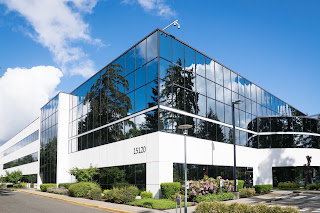From the various study, it has been found that high energy is consumed by the building sector. To reduce energy consumption various technology can be adopted. Here few technologies are listed that can be used to reduce electricity consumption in buildings.
1. Variable flow refrigerant system (VRF)
VRF system is also known as VRV (Variable refrigerant flow) system. It is an important HVAC technique that is widely used for buildings to make energy-efficient systems. It is a ductless HVAC system. It can provide heating and cooling simultaneously. It is a bulky and low-volume system. VRF system has a single outdoor condensing unit and refrigerant circulated within the building to multiple indoor units without the benefit of the duct. A VRF system uses variable-speed motors and variable refrigerant flows to heat and cool, unlike standard units which use a simple on/off operation. It has inverter compressors that run with lower power consumption and partial heating or cooling load and multiple indoor units on the same refrigerant loop.
When another indoor unit is turned on, the outdoor unit recalculates the requirements from all of the indoor units and increases the compressor load, according to demands. The ability for a VRF HVAC system to adjust to the outdoor conditions is its ”secret sauce” and what makes it so energy efficient, compared with traditional water-cooled systems with chillers and fan coils.
2. Radiant Cooling
Radiant cooling is the method of providing cooling by removing sensible heat from the room by thermal radiation. Primarily cooling is done by thermal radiation and secondarily it is done by convection. More than one-half of heat transfer is done by thermal radiation. It is cheaper than a conventional air conditioning system. Heat radiated by room or occupants is absorbed by the radiant cooling system. When the floor is cooled, it is often referred to as radiant floor cooling; cooling the ceiling is usually done in homes with radiant panels. These radiant panels are made of aluminum. It is an energy-efficient cooling system. It can save electricity consumption by approximately 40% compared with a conventional air conditioning system.
3. Phase change Material (PCMs)
Phase change material (PCMs) can store the thermal energy as well as it can release the thermal energy also. These materials are incorporated with concrete to reduce the energy consumption from the buildings. The principle of the phase change material (PCM) use is simple. As the temperature of the building increases, the material changes its phase from a solid-state to a liquid state. The reaction being endothermic, the PCMs absorbs heat. Similarly, when the temperature decreases, the material changes phase from liquid to solid. The reaction being exothermic, the PCMs desorbs heat. Many applications of phase change material already exist in building materials, such as in drop ceilings, metal roofs, and stud walls. These uses have been used to save energy, create more efficient cooling and heating systems. It reduces the dependency on the usage of fossil fuels.
4. Passive cooling
These systems are the least expensive means of cooling a home that enhance the performance of the building without any use of any devices. It is a building design approach that helps to provide thermal comfort by removing heat gain in the building and providing low or no energy consumption. It depends upon natural heat-sinks to detach heat from the system. Various passive cooling techniques are natural ventilation, earth air tunnel, shading, wind tower, evaporative cooling, roof sprays, etc.






No comments:
Post a Comment
If you have any doubt then please let me know. I will help you.